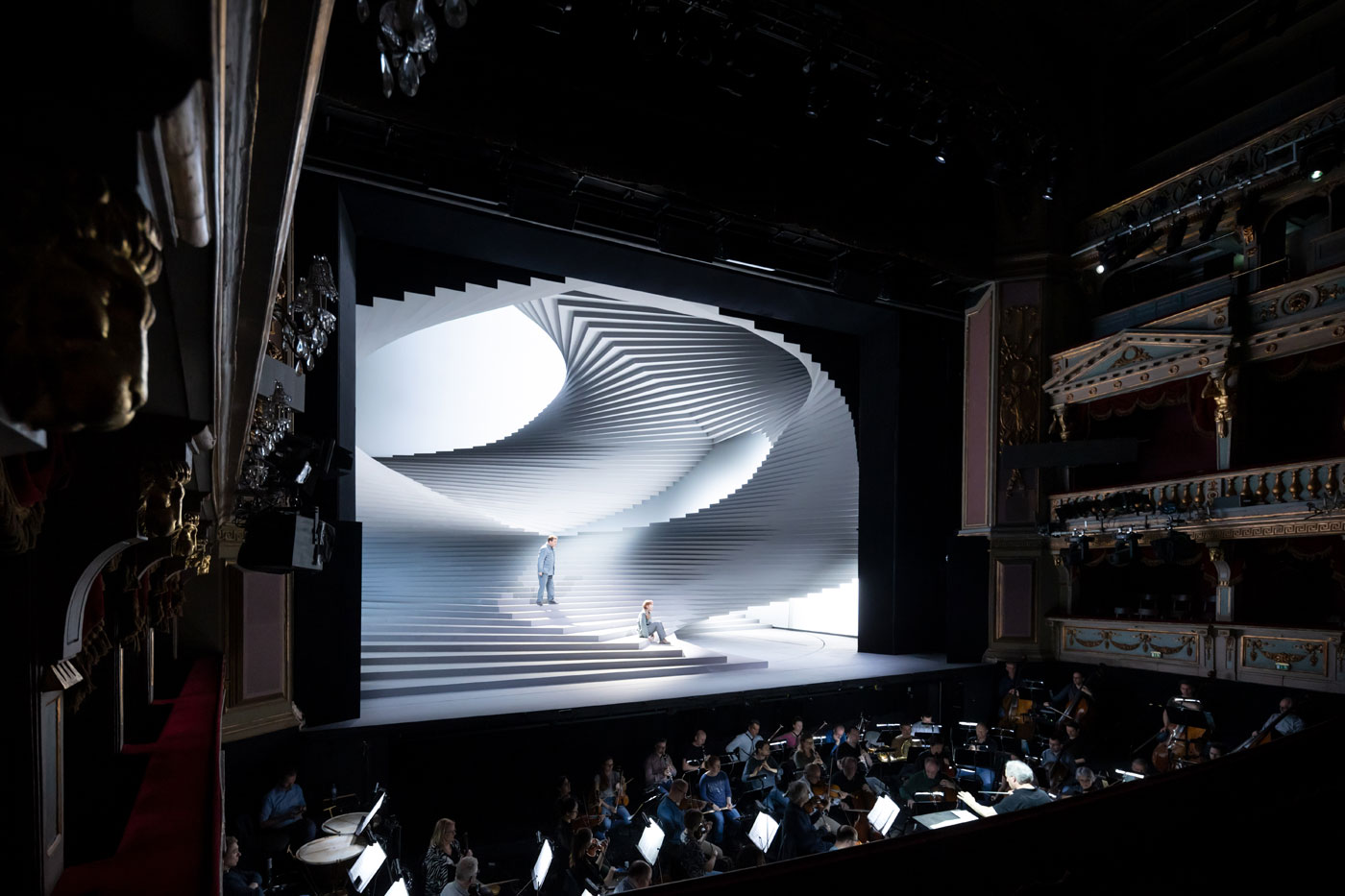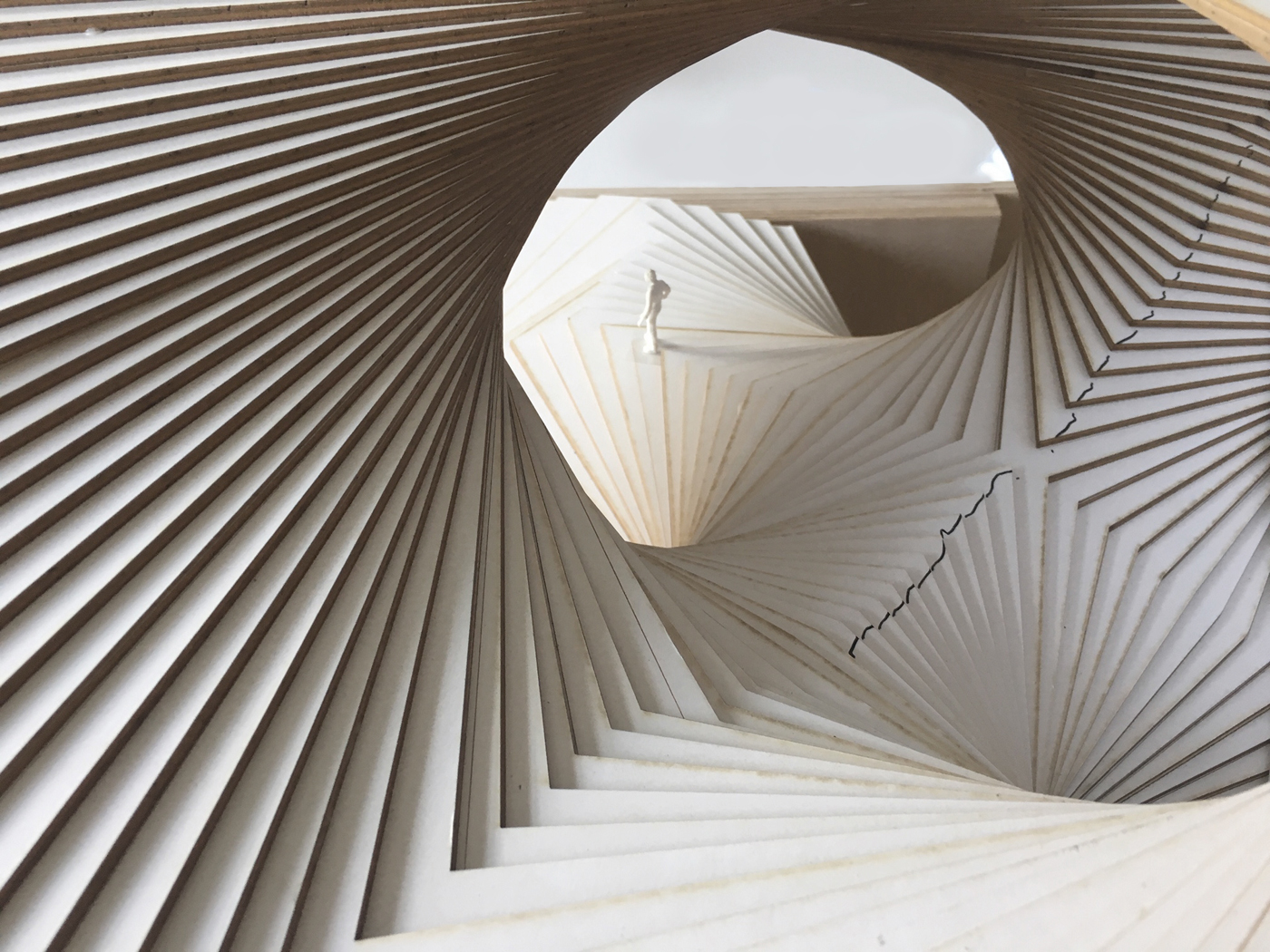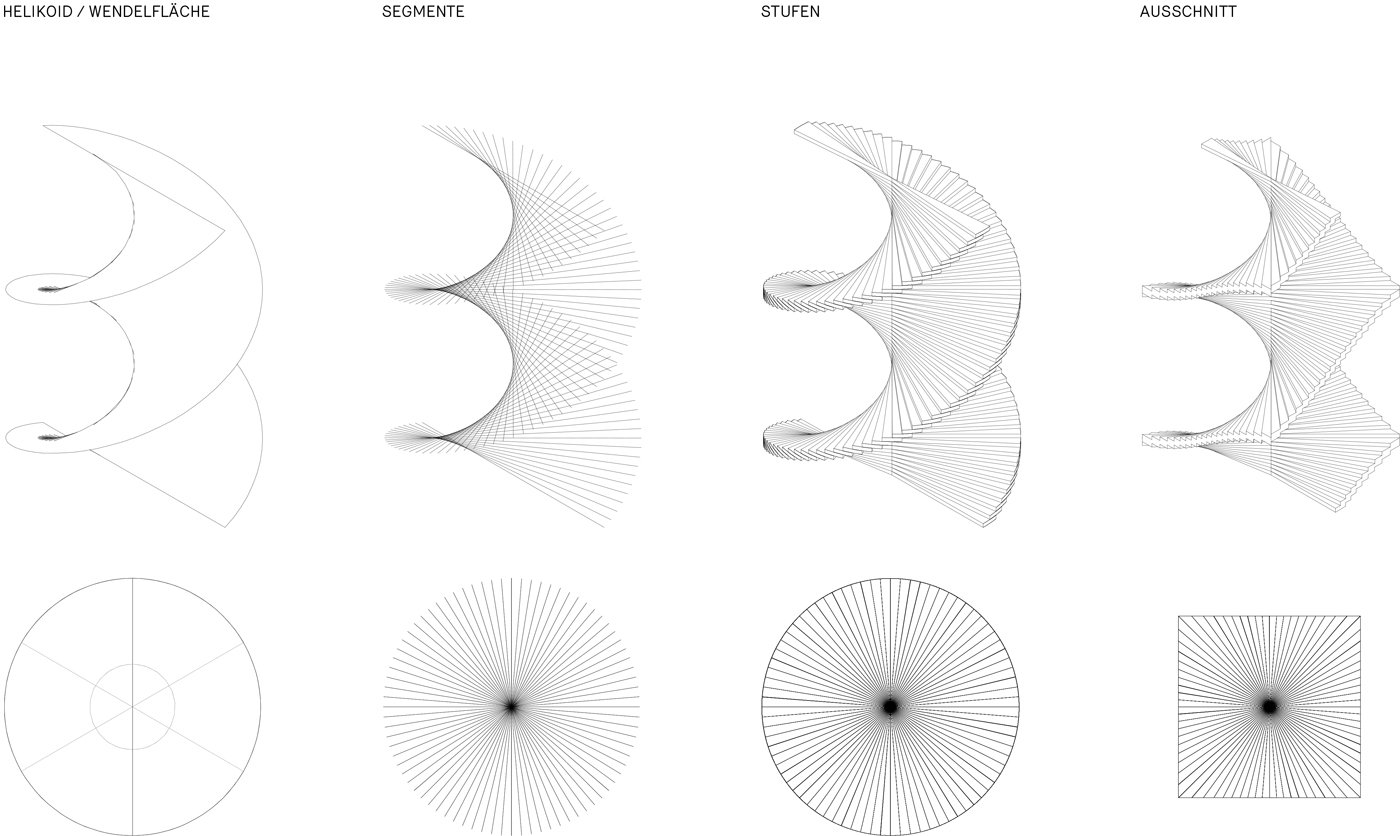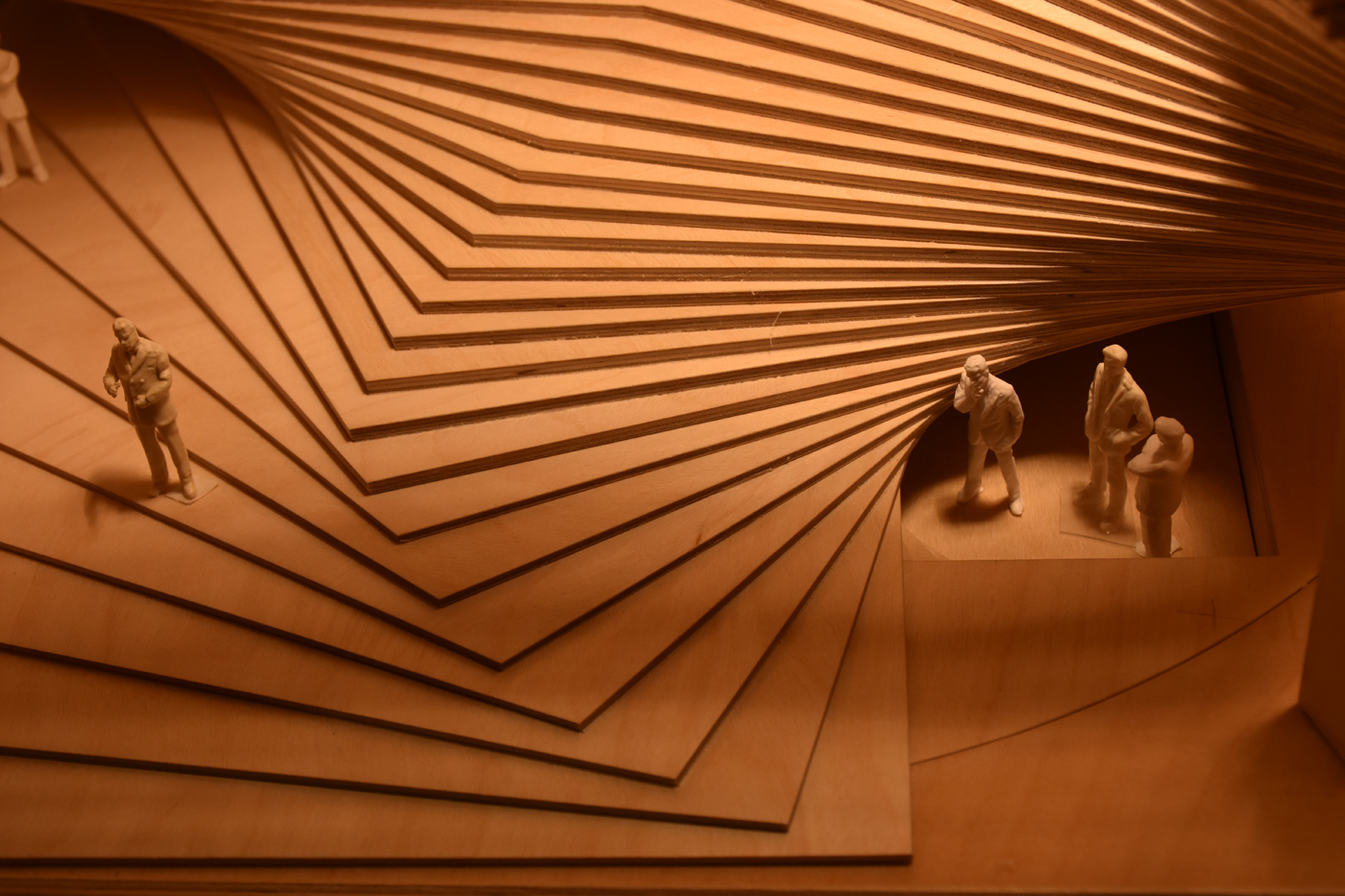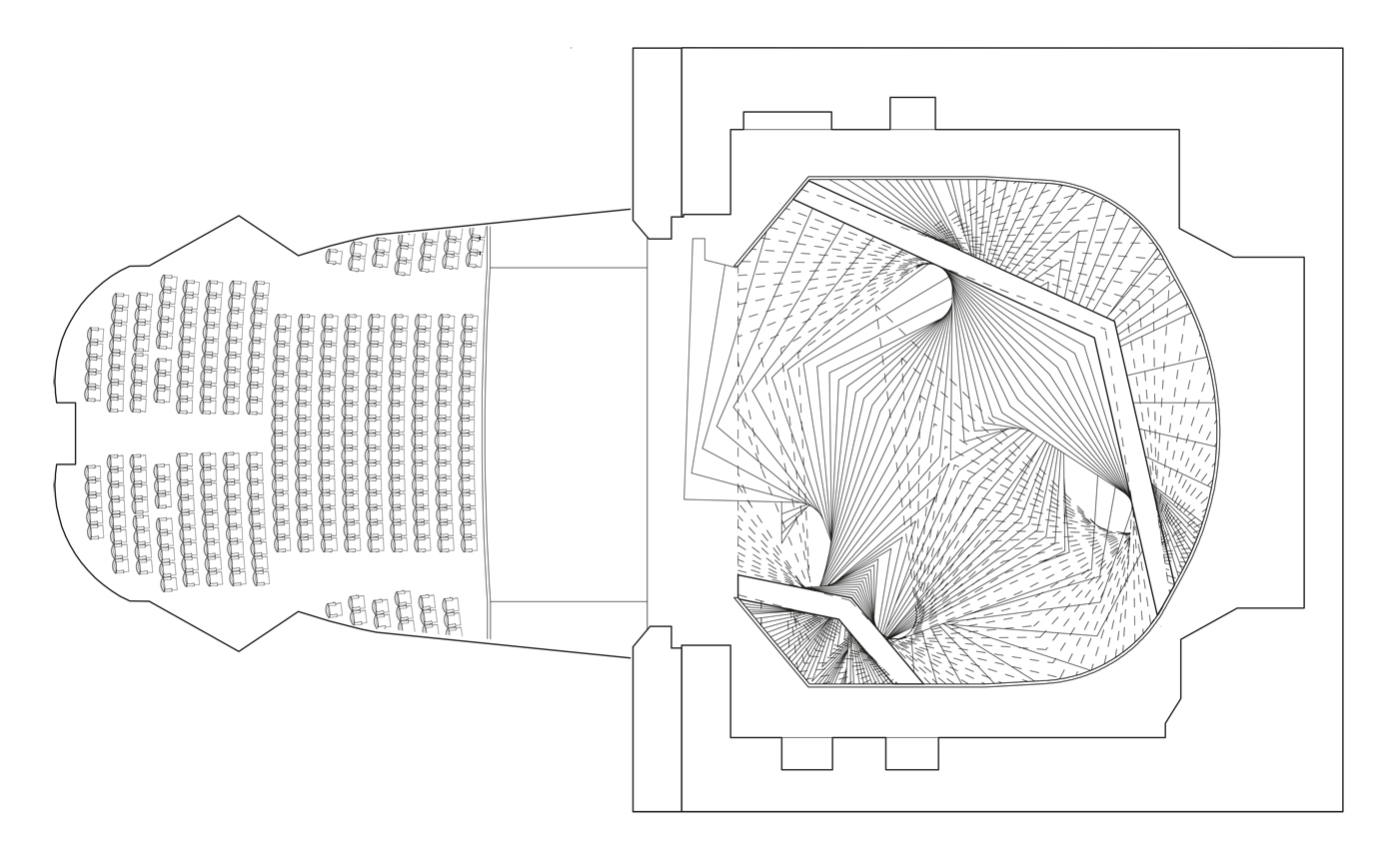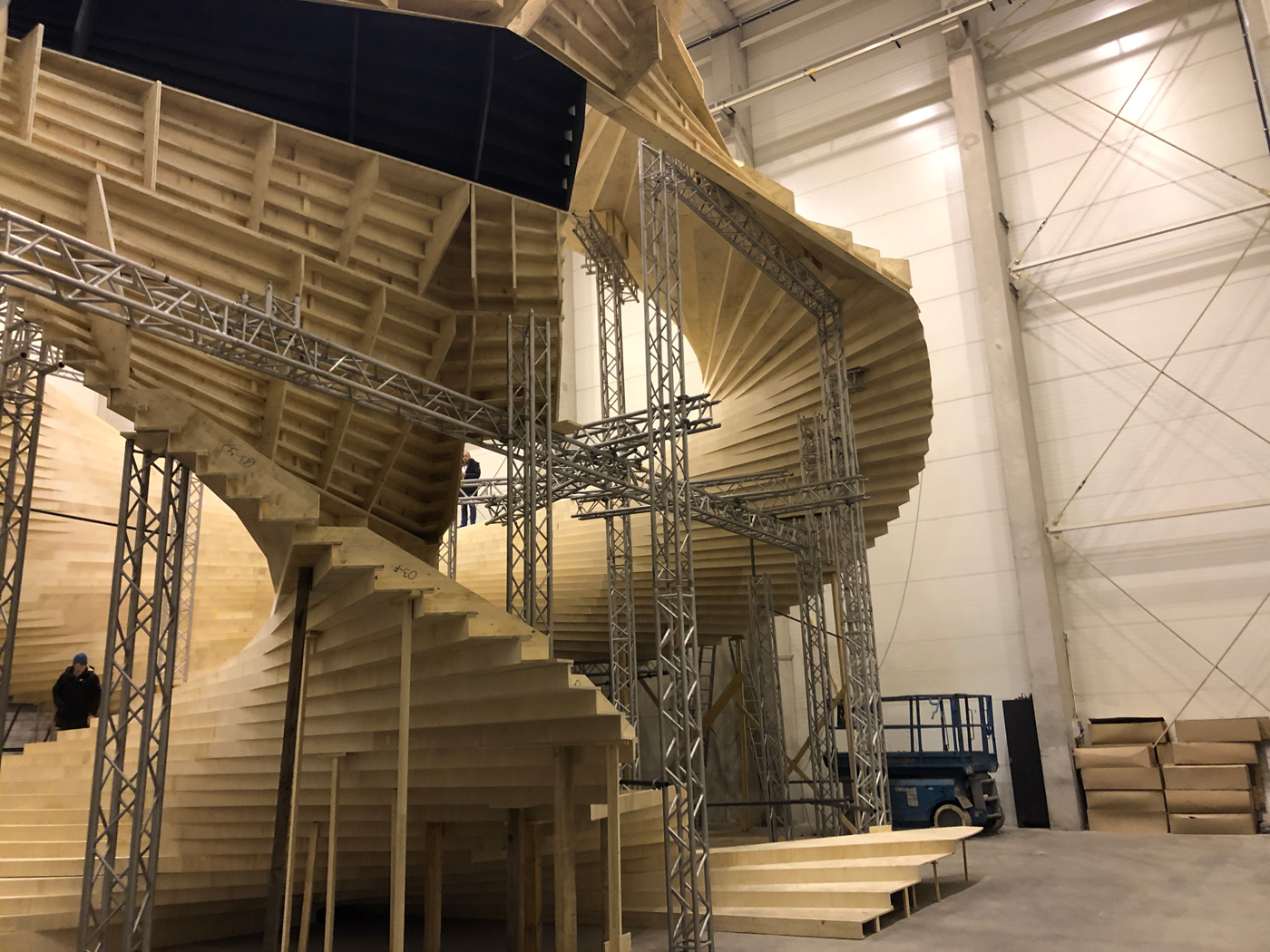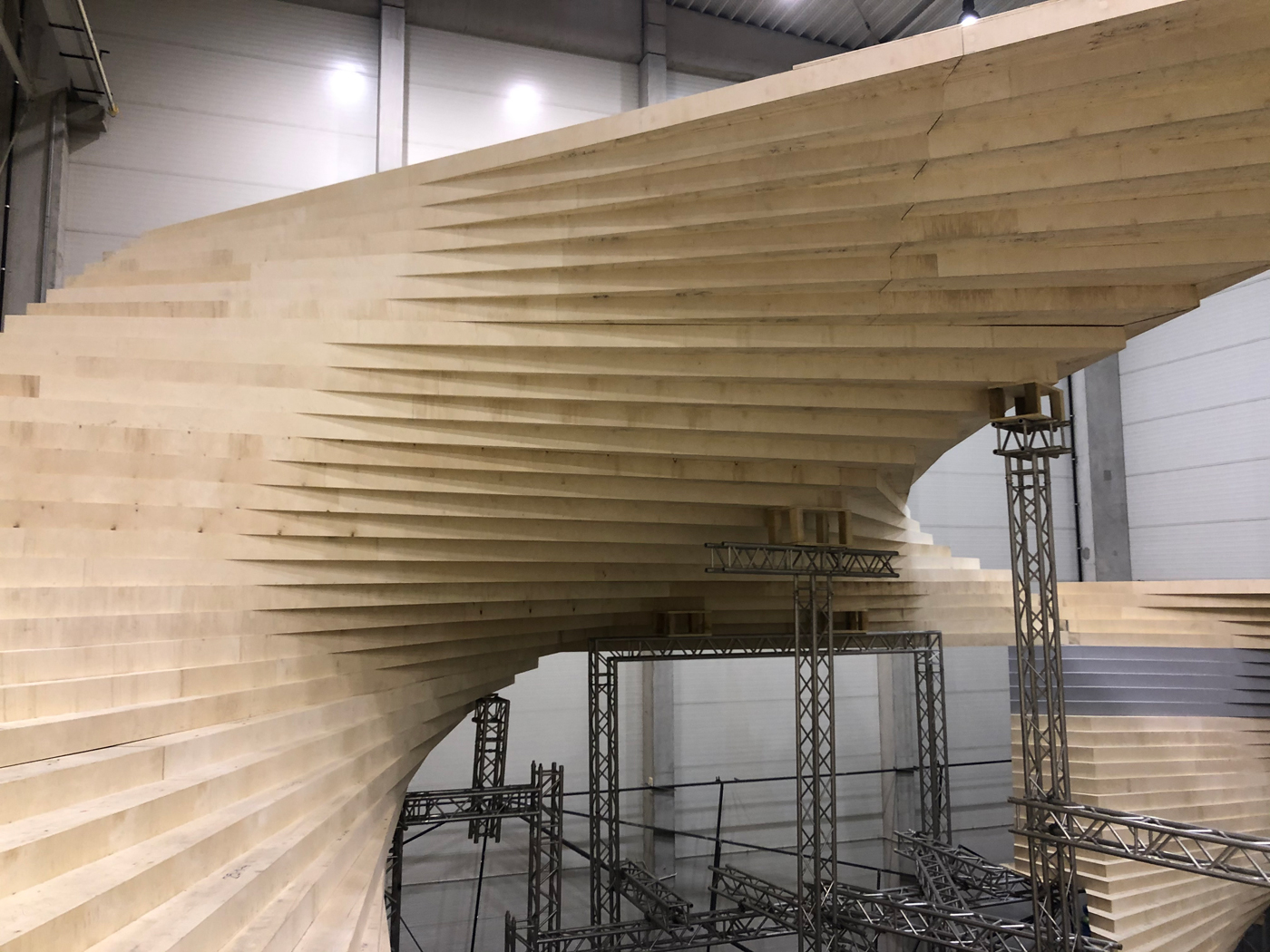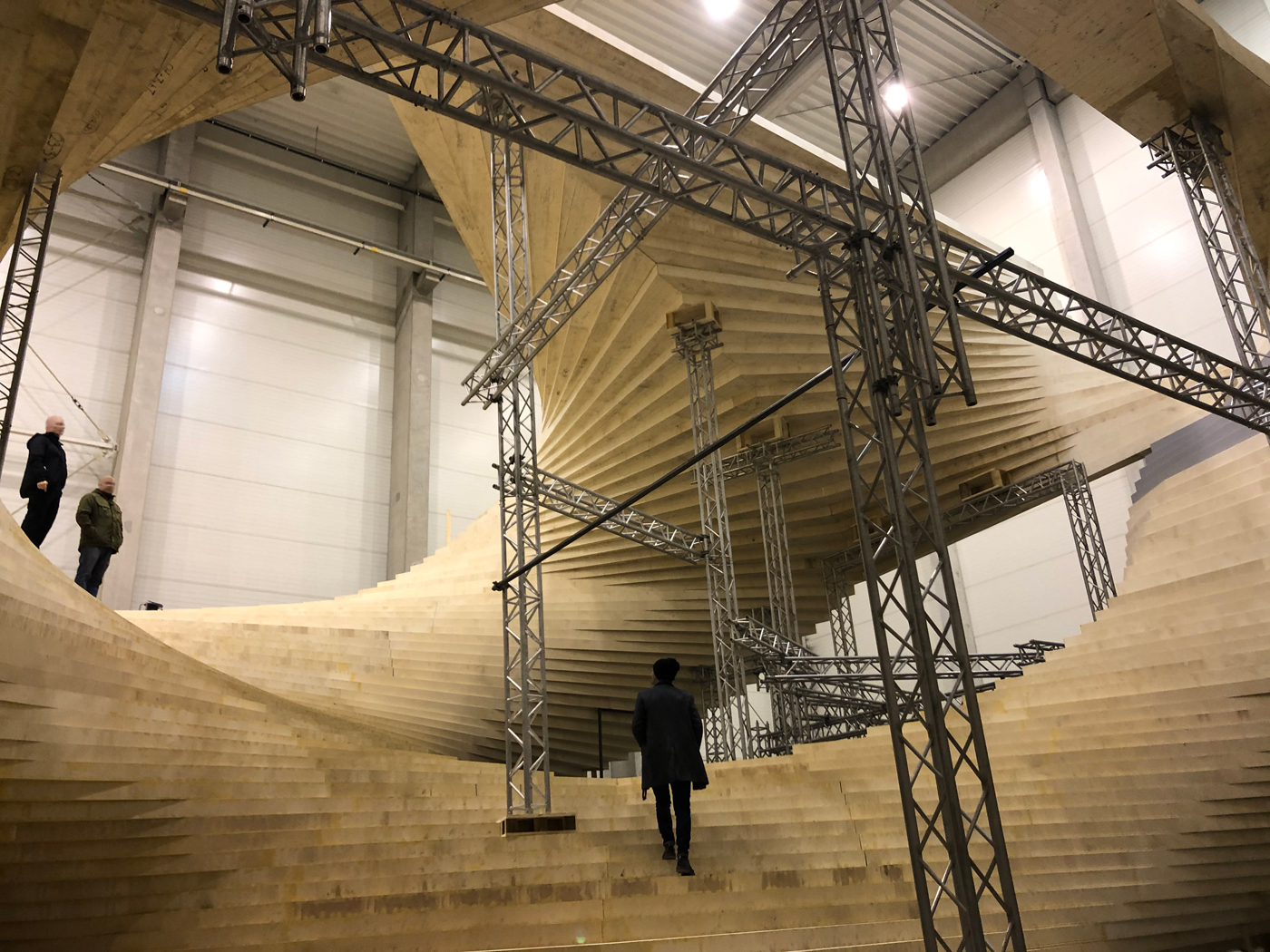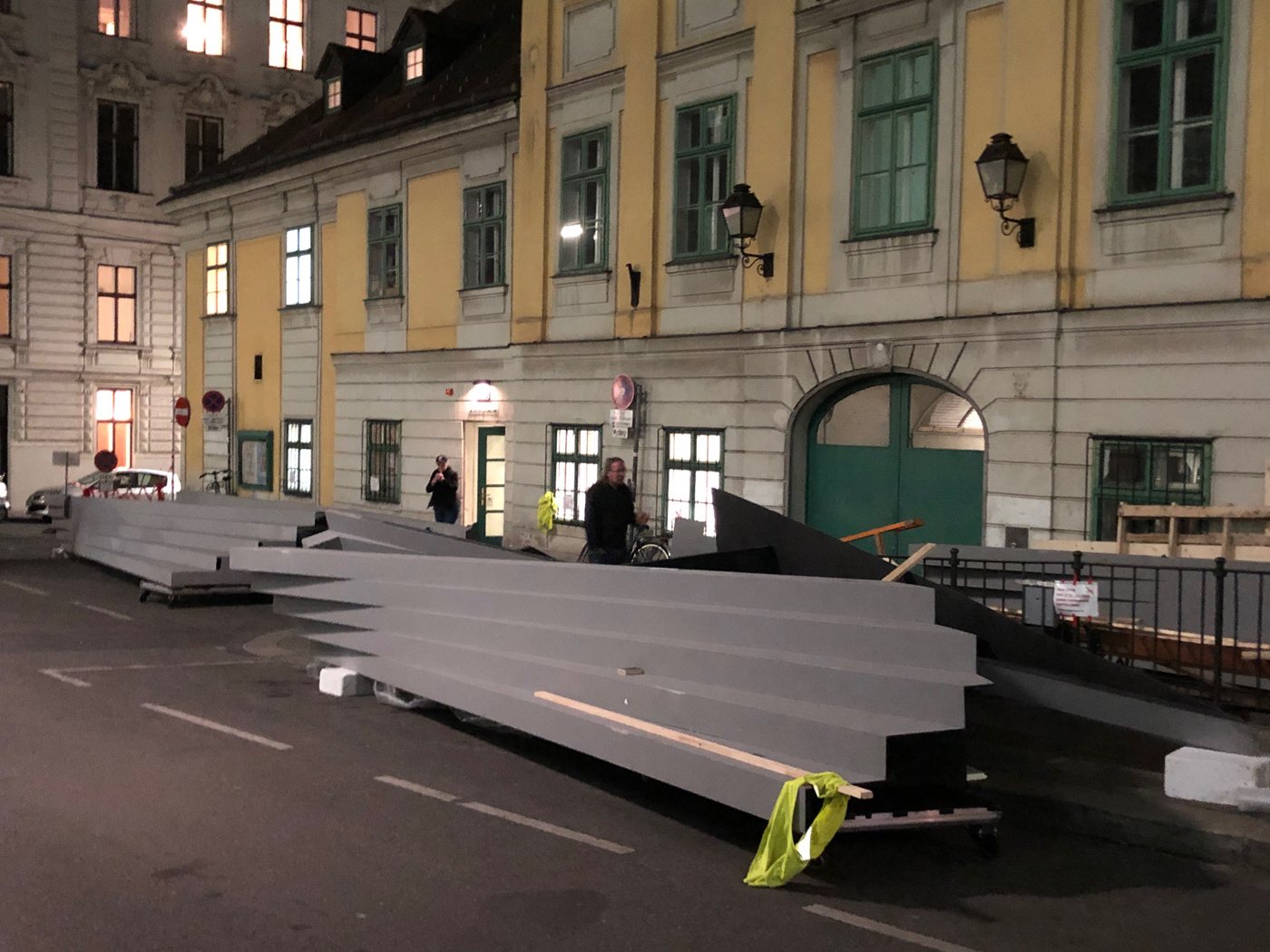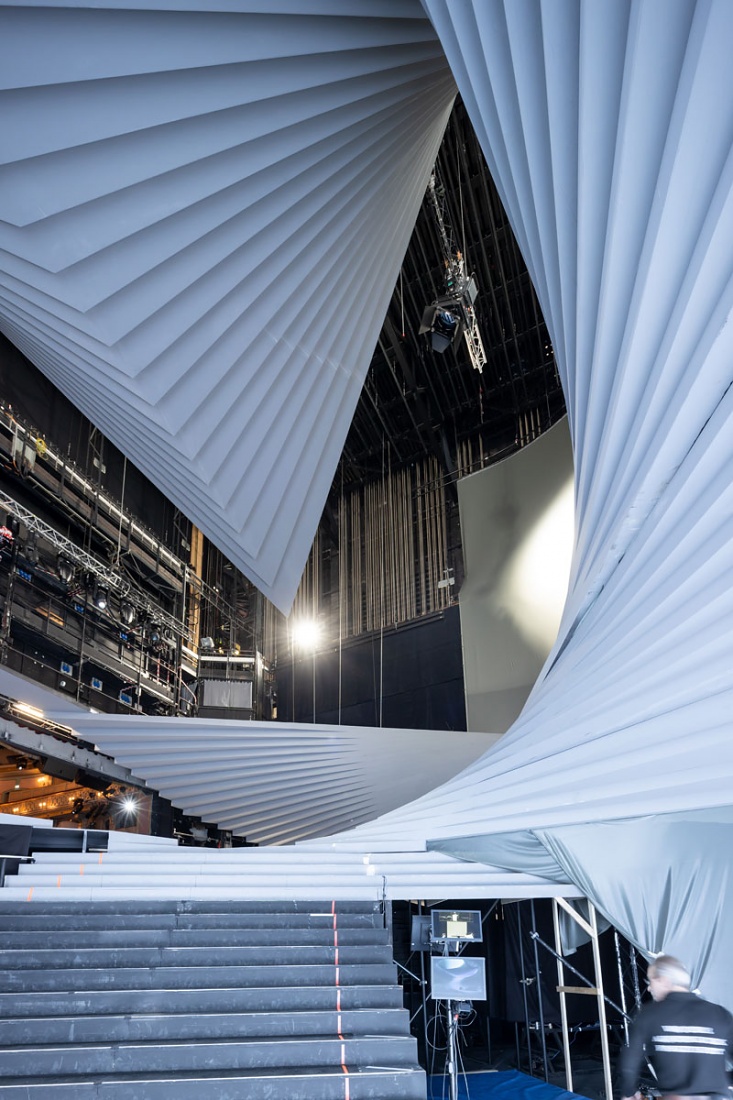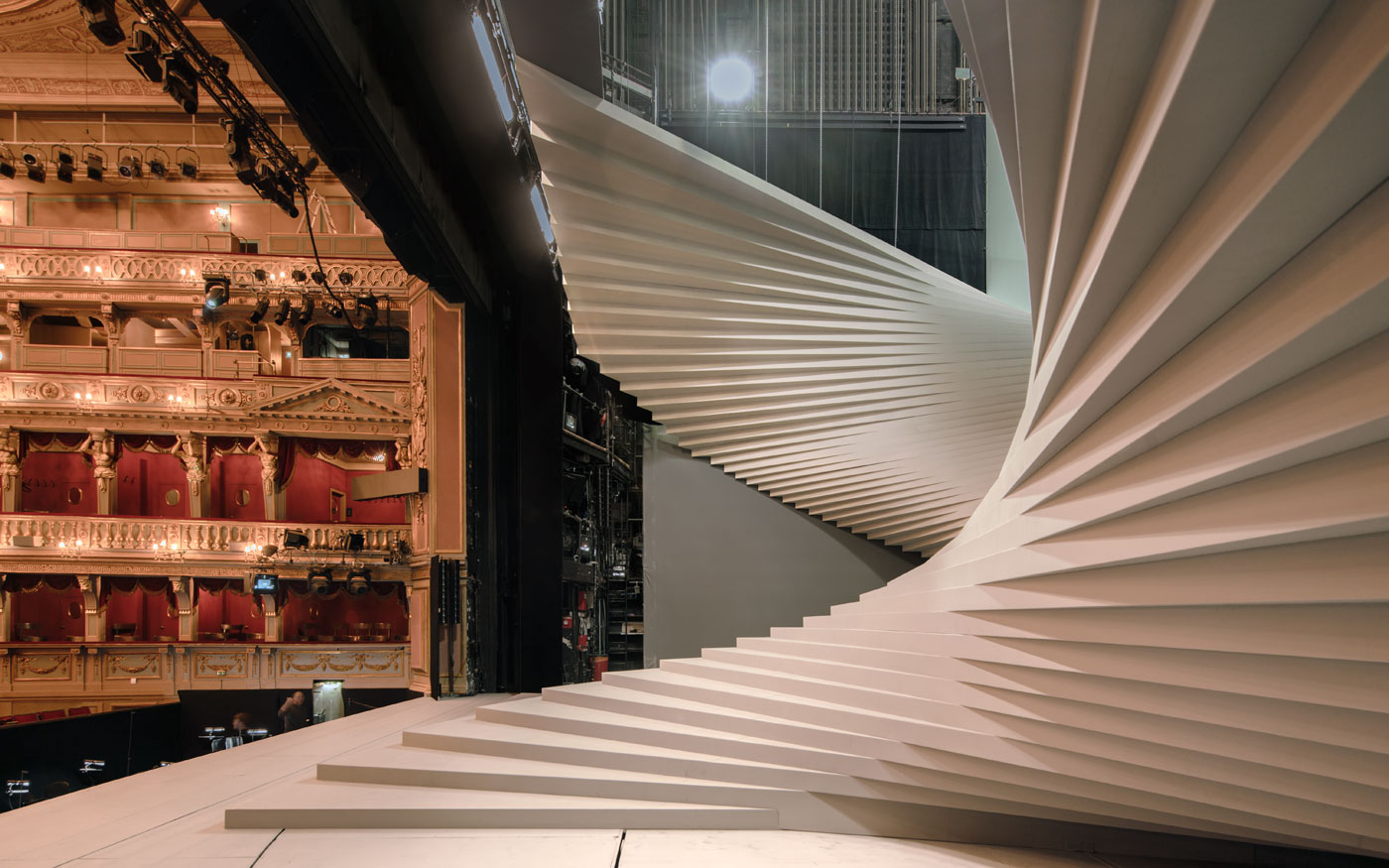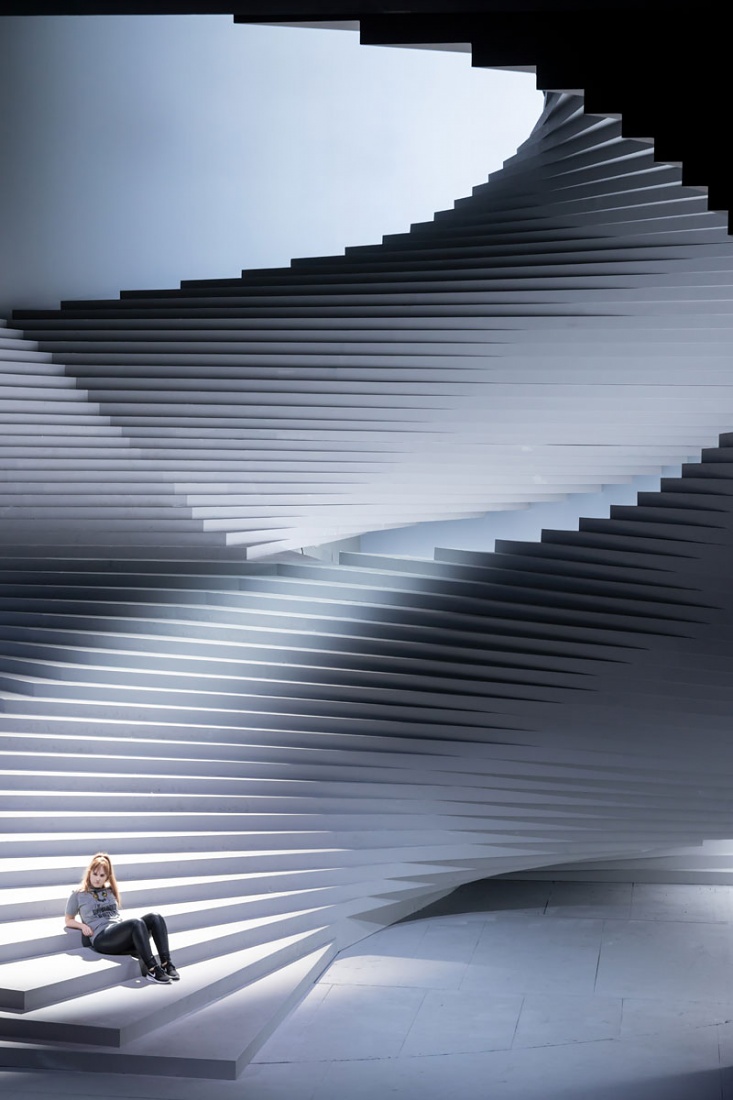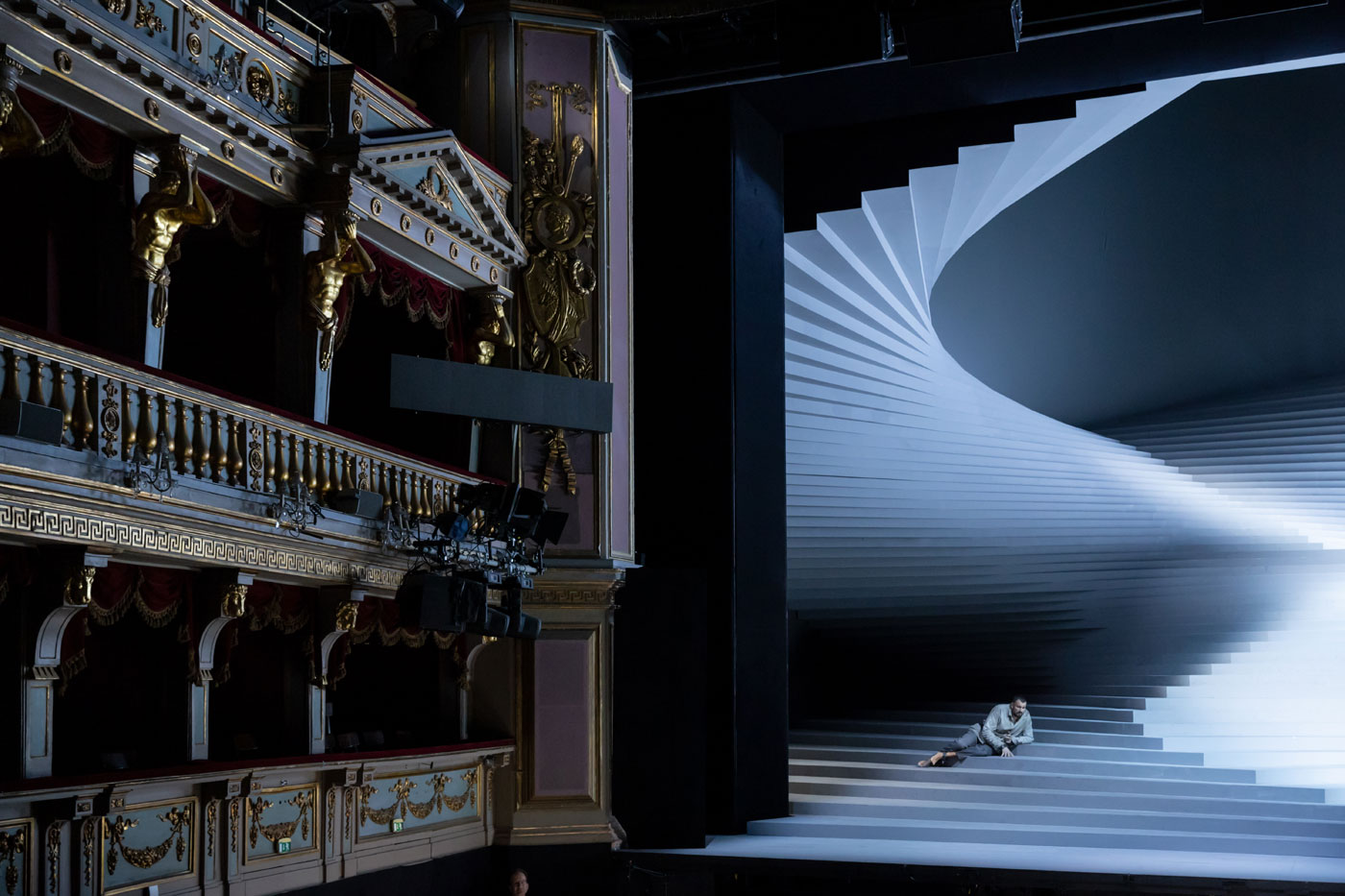Ludwig van Beethoven’s solo opera Fidelio was performed at the Theater an der Wien with a set design by Barkow Leibinger, an intimate and traditional theater, at the site of its original (1806 second version) production in this 250th anniversary year of Beethoven’s birth. Directed by the Oscar-winning actor Christoph Waltz, musical direction was by Manfred Honeck from the Pittsburgh Symphony Orchestra. Due to the Corona outbreak this was an opera that no public had the chance to see in the theater, however, its filming allowed it to reach an ever greater audience.
In close collaboration with Frank Barkow and Christoph Waltz the sets are intended to reflect and stage the themes Beethoven espoused, namely redemption, freedom, and enlightenment against tyranny. The set is intended to be inclusive, that is, to encompass all of the scenes of the two acts which take place in a prison near Seville. Rather than depict a prison in a literal way the set is an abstraction organized as a double-helix which spirals vertically to the full height of the backstage as well as its full depth: a kind of modern Piranasian vertical labyrinth. This stepping topographical landscape frames a central aperture above which is generally the source for light and movement. The lower levels of the set are defined by overhangs and a “dungeon” gate which allows singers to descend and ascend from below the stage completing a path of movement from high to low and back. The stepped topography of the sets allows singers to march, confront each other, walk, sit, or recline upon its surfaces individually or in large groups (choir). The geometric complexity of the set allows the singers to enter and depart from multiple entrances where movement typically occurs on the diagonal. The opera begins dramatically when the prisoner Florestan is thrown into the prison from above by two guards. Florestan (stuntman) tumbles head over heels 7 meters from the very top entrance to the base of the set marking the onset of his imprisonment and the opera.
This is an architecture complimented by choreographed movement by those artists moving over its surfaces animating and emphasizing its structure and spaces. The set is also an instrument for projecting musical sound.
The set is intentionally spatial and is an extension and complement to the decorative baroque theater itself which utilizes the full depth of the stage and backstage. It is both spatial and sculptural in its three dimensionality which means it changes perspectively depending on the seat in the theater it is viewed from. The golden warmth of the historical theater is contrasted by the cool grays of the set. It encourages and is enforced by dynamic movement: singers can move up and down or back into its recesses singularly or in groups with the sound of their voices projected forward from its cavernous surfaces. The geometry has the further advantage of acoustical projecting balanced sound forward and offers the orchestra conductor visual contact directly to each singer.
The themes and acts of the opera are underscored by the set and lighting. Henry Braham’s lighting concept transforms the sets into multiple ambiances from near darkness to natural appearing daylight from above. The lighting is also calculated to change incrementally and in slight color variations. The verticality of the set allows it to differentiate in relationship to light: bright and glowing above (freedom) or dark and mystical below (the dungeons). Scrims of LED pixels and screen diffusers cover the openings in the set construction and create effects of light, color, reflection, and shadow.
After numerous iterations in digitally (CNC) cut models and digital drawings the final construction was built off-site in Poland in CNC cut timber segments which could fit through the relatively small back-stage doors, then reassembled in the theater like a ship-in-a-bottle. Timber construction allowed for a quick, economical, and sustainable/ re-buildable material. Painted matte gray, in order to facilitate the lighting, the set offers a sculptural backdrop for the singers and the costumes that is minimal, modern, and martial, in a beautiful palette of grays, greens, and olive.
Project Information
Architects — Barkow Leibinger, Berlin, Frank Barkow, Regine Leibinger
Team — Frank Barkow (Partner), Antje Steckhan (Project Architect), Jan Blifernez, Reidar Mester, Andreas Mohling, Jens Wessel
Program
Opera set
Loction
Vienna, Austria
Dimensions
52,5 x 52,5 feet (17 x 17 meters, height 36 feet (11 meters)
Construction
01/2020 - 03/2020
Client
Vereinigte Bühnen Wien Ges.m.b.H., Theater an der Wien
Direction
Christoph Waltz
Conductor
Manfred Honeck
Costumes
Judith Holste
Light Design
Henry Braham
Photos
Iwan Baan, Amsterdam
Simon Menges, Berlin
Theater an der Wien, Vienna
- Barkow Leibinger
- T +49 (0)30 315712-0
- info(at)barkowleibinger.com
- Privacy Policy
- Imprint
